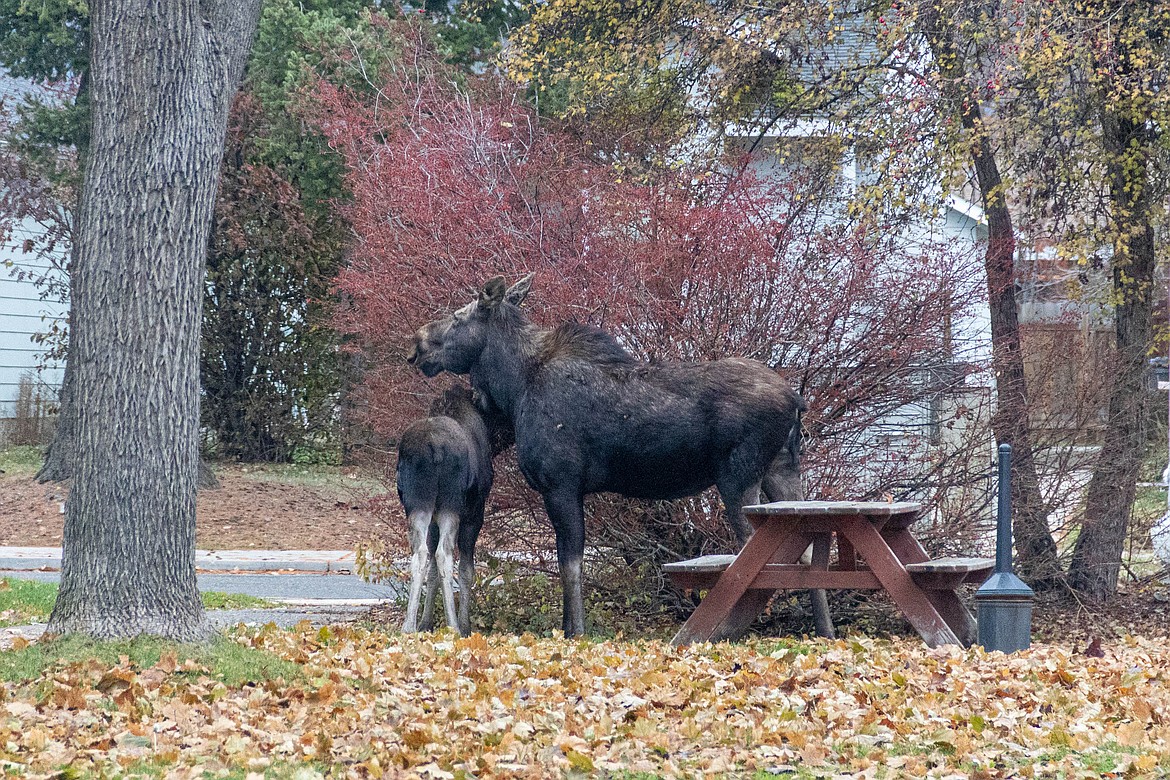Moose on the loose in region
Temperatures continue to drop in North Idaho, which means animals like moose and elk are coming further down the mountain in search of food and shelter.
Because of the change in weather, moose have already begun popping up in yards around Sandpoint, sometimes catching residents by surprise when they walk outside. With wildlife showing up quite literally at our front doors, it is important to know how to stay safe around these creatures.
First, always be alert when walking out the door of a house or garage, or getting out of a vehicle. It’s better to see an animal before the animal sees you so you are able to react faster than it does.
In the case of a moose encounter, it’s best to be as quiet as possible. If a moose doesn’t see you, remain a safe distance away and walk slowly in the opposite direction without catching its attention. If a moose does see you, talk to it softly and again try to move away slowly. Loud noises and quick movements can startle the animals, causing them to want to charge, according to fish and game officials.
Moose will show signs that they are agitated and it is important to be aware of what their body language is telling you. Much like dogs or horses, an angry moose will lay its ears flat to show that it is upset. Additionally, the hair on its shoulders and back will bristle up, letting you know it’s losing its patience.
A moose with babies is much more likely to attack than a lone moose, so be sure to give mom some extra room if she shows up in your yard one morning. According to the National Park Service, always try to maintain a distance of 25 yards from any moose — more for moms — even if they seem to not mind the photoshoot you’re creating of them munching on your shrubs.
“Cow moose are extremely defensive of their young, so use extra caution around cows with calves,” Parks Service officials said on the agency’s website. “Don't get between a mother and her calf.”
When moose do charge, more often than not, they are bluff charging, meaning they don’t actually want to attack you. However, it’s better to assume that all charges are real. In this instance, try to get behind something large, such as a vehicle or tree. If there’s nothing to hide behind — run. Moose, like many people, don’t like running very long distances, and will usually give up the chase after a short distance.
Should a moose attack you, curl up in a ball on the ground and cover your head with your arms. It is not encouraged to fight back, as this will only encourage the moose to continue its onslaught.
NPS officials recommend staying the same distance away from elk — at least 25 yards at all times. While all wild animals are unpredictable, elk can get particularly aggressive during their rut, which is in the fall.
While many may think elk are fairly docile, they can flip a switch very quickly, and have been known to ram vehicles when feeling provoked.
“If an elk approaches you, back away slowly,” said Teresa Larson, an REI market coordinator. “Give the animal space and allow it to pass.”
Much like with moose, elk usually bluff charge to scare people off rather than actually wanting to attack. It is best to try to keep a large object between you and the animal as often as possible.
If an elk does attack, curling up into a ball and protecting your head until the attack has stopped is the best option, Larson said.

